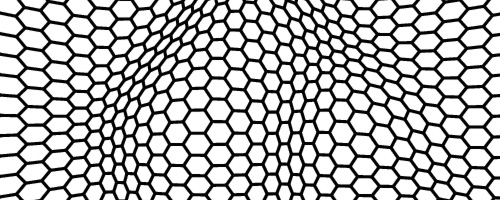Simulation and Nature in Design
Description
This course surveys techniques for dynamic simulations in design. It covers topics often geared toward science, engineering and computer graphics, but from a slightly different perspective. In science and engineering, you want your simulation to isolate a specific phenomena, and either give you some measurement or test some hypothesis. It does not have to mimic reality, but provably tell you something about the axioms of your model. In computer graphics, the only standard of rigour is that your model looks real, regardless of the science behind it. It also generally needs to be fast. In design the standards are completely up to you. You might be simulating a physical object, and therefore require precision. You might be creating an interactive application and need speed. You might be using these tools to make something completely novel, so it does not need to be based on physical principles or look like a physical object. Because of this freedom, we approach these techniques with an open mind. It is not about how to work with specific techniques, but how understanding these techniques can be a generator for new ideas. Below is a description of the topic for each week and a link to resources for each topic.
Wednesdays 6pm-9pm on MIT campus room 66-160
Thursdays 7pm-11pm at Sprout, 399R Summer St, Somerville
Thursdays 7pm-11pm at Sprout, 399R Summer St, Somerville

As an introduction to the idea of modeling, we will go over a system called diffusion limited aggregation. The basics of this process is that particles move randomly and when they hit a static structure they stick to it. It has been used to model various processes and fractal forms in nature including snowflakes, lightning, and dendritic agate.
Math: We will also go over basic mathematics that will pervade the entire course including vectors, linear algebra, and calculus.

At the most primitive particle systems simulation basic newtonian physics on point masses. From a simple foundation, however, they can be used to create complex systems and forms: cloths, galaxies, trees. Also, the theory behind them, numerical integrators, will form the basis for more complex simulations of continuum phenomena.

We look at the phenomena of diffusion using finite difference simulations. Diffusion is the spread of particles under random motion, but can be generalized to heat, economics, population dynamics, and many other domains. We also look at related the related phenomena, dielectric breakdown modeling and reaction-diffusion.
Week 4 Multi-Agent Systems

Multi-agent systems are a general framework to think about the interaction of many individuals. It is defined by agents acting under certain rules or behaviors based on their local environment. We will look at a simulation of flocking known as boids and also talk about potential directions in traffic and ecology.
Smoothed Particle Hydrodynamics has become a common method for simulating fluids in real-time. It is based on particles whose attributes are averaged out over space. Here we introduce the basic building blocks of a fluid simulation using SPH.
Week 6 SPH continued
We address some advanced topics in Smoothed Particle Hydrodynamics. These include fluid properties like surface tension and true incompressibility. We also look at rendering techniques for visualizing particle based fluids. Finally, we talk about extensions of the model to other phenomena. SPH can be applied to any PDE problem, and here we look at diffusion and erosion-deposition.
Week 7 Dunes

We investigate patterns formed by wind blown sand. While your first instinct might be to model wind as a gaseous fluid and think about erosion and deposition models of sand, people have created much simpler models for sand dynamics.
Good Stuff